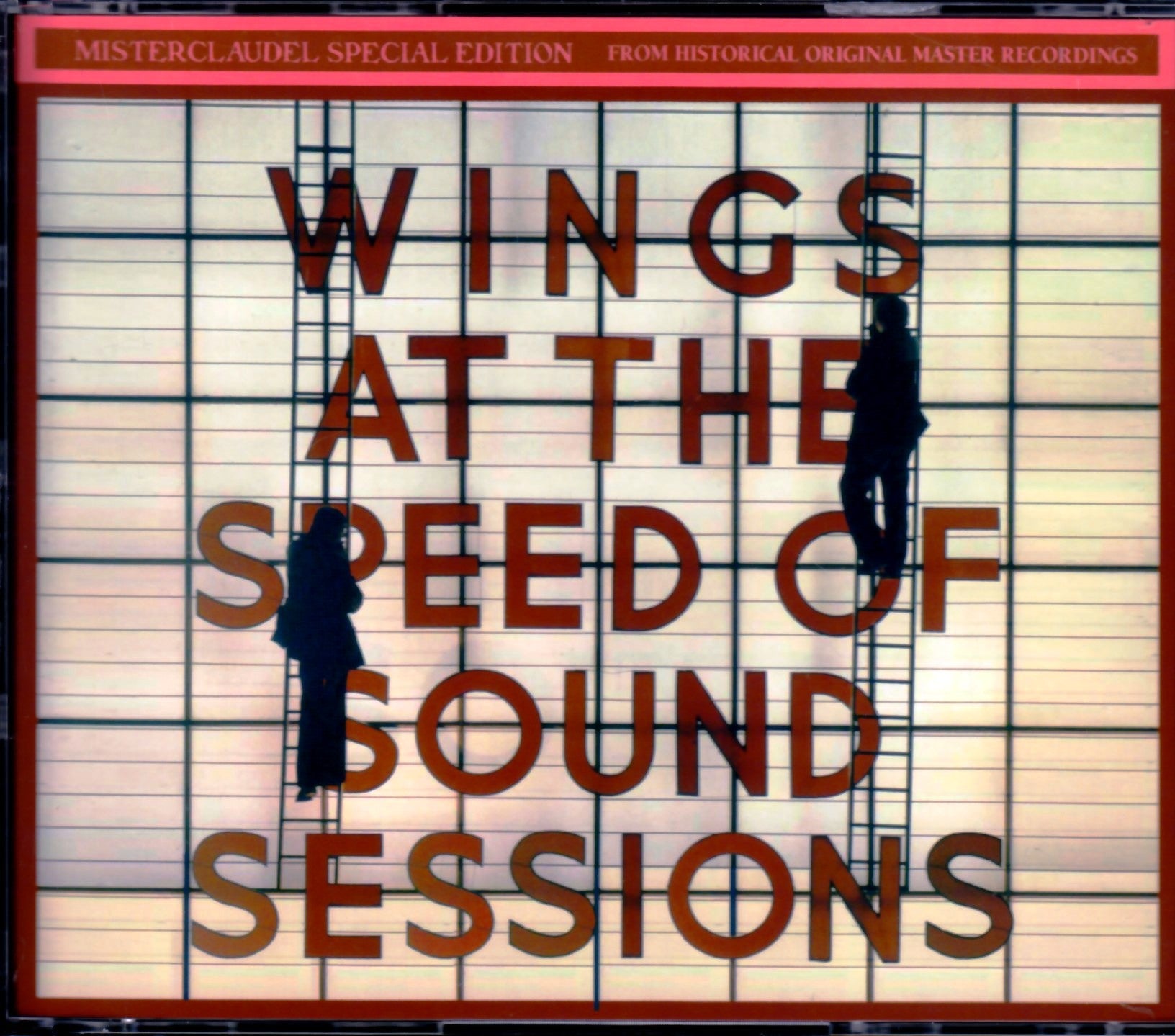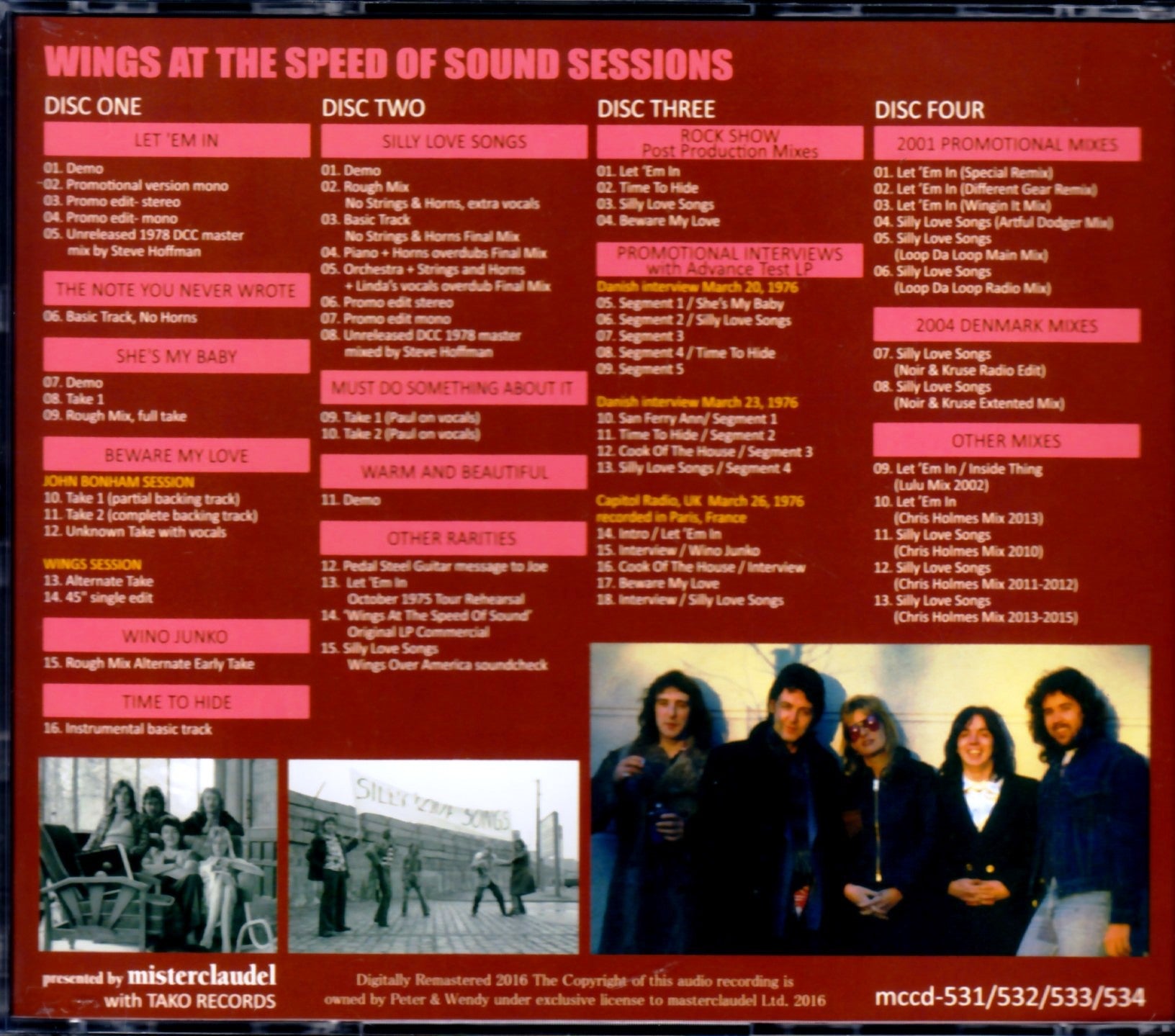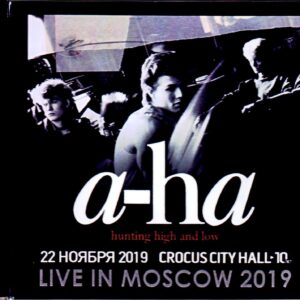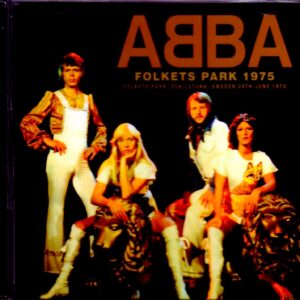Description
A title containing Wings’ Speed of Sound sessions will be released. Previously, the same label had released a single title as part of the Trevor Jones Tapes, but this work includes those and has even more fulfilling content, and is indeed a 4-disc set of Speed of the Dead titles. Covers sound session-related sound sources. It is exactly the content that is suitable for the decision board. [Until the recording] Paul is a multi-instrumentalist himself, and is a versatile artist who is able to perform everything himself during recordings. The reason why they decided to form a band and assigned each member to play each instrument was simply because Wings was a band aimed at performing live. Wings was a band for Paul to perform live. Since the band was formed in 1972, they had been steadily performing on stage, and in 1975 the opportunity was finally ripe. With hit singles and hit albums, blessed with band members who can withstand a highly complete stage, and above all, Paul’s fulfillment reaches its peak around this time. Exactly, when are you going to go on a big tour? Now! The timing. After releasing their new album “Venus and Mars” at the time, they embarked on their first world tour, starting in Europe, then visiting Australia and the UK. As a side note, Japan was also included in the original schedule, although it was canceled. [Two World Tours] This 1975 Wings world tour was a great success in various places, and it is said that Paul himself was very satisfied at the moment the band that Paul had nurtured with so much care was recognized by the world. And we will take it a step further. Wings, which he formed, needed success in the United States in order to become a band comparable to the Beatles. And finally, the 1976 US tour was announced. As the Beatles once did, Paul himself must have understood that true success can only be achieved in America, the home of show business. The set list in 1975 was also very complete, but as if to push things further, Paul recorded in the studio in parallel between tours, and before the US tour. will announce a new album. That is “Speed of Sound”. In other words, it is generally recognized that the world tour was held over two years in 1975 and 1976, but in reality, the tours in 1975 and 1976 should be positioned differently, and there is a big difference. The point is that the new songs recorded in “Speed of Sound” released between these two tours were incorporated into the 1976 tour. What’s more, this was a notable difference in that it wasn’t just that they performed a new song, but that the new song itself became the highlight of the concert. As mentioned earlier, the US tour was a big event for Paul that he wanted to make a success. In 1966, he performed as a member of the Beatles in concerts throughout the United States. For American fans, it will be Paul’s first time on stage in 10 years. They absolutely have to succeed, so I want to release a new album and push them further. “Speed of Sound” is such an ambitious work. In fact, along with the success of the tour, the album was also a hit, and “Kokoro no Love Song” topped the singles category on the Billboard annual chart, and “Knock of Happiness” also became a big hit, reaching 2nd place in the United States, and they also made an impression at the concert. The success of the album and the success of the tour can be said to be inseparable, as “Proof of Love” is also included in this album. [Speed of Sound] As mentioned above, the album “Speed of Sound” was recorded with the premise of a tour, and there are some beautiful melodious songs that are typical of Paul, while others are clearly performed on stage. It contained a wide variety of songs, including songs that were created with that in mind. What makes this album unique is that it includes vocal songs by all band members, including Joe English, who did not sing on tour in order to maintain a sense of unity as a band. Members other than Joe and Linda also take vocals on stage, but Paul’s commitment is visible in the fact that he dared to let these two take vocals. In fact, 5 out of 11 songs feature vocalists other than Paul, and it’s an album that strongly emphasizes the band’s identity, as if they were conscious of the Beatles-like image of everyone singing. This work is a title that covers all existing sound sources from that recording session sound source. [Album Sessions] Discs 1 and 2 contain demos, outtakes, different versions, etc. in the order of songs recorded on the album. “Knock of Happiness” includes a total of 5 versions, including demo sound sources and different mixes. Although the lyrics are in the demo stage, they are almost complete, but the only accompaniment is the piano, so it’s interesting that Paul adds the sound effects with his mouth. Although the melody and lyrics are already complete, it seems that the arrangement has not been finalized, so it is assumed that various sound effects were memorized during the preliminary singing stage and used as reference for later arrangements. The inclusion of children’s voices in the songs is something that can only be achieved through home recording. It’s as if the scene of the scene is coming to mind. “Kimi ga Inai Note” is a basic track before the horns are dubbed. “My Baby” begins with a demo. It’s a simple performance with just a light piano, and Paul sings as if humming lightly. Next, take 1 is almost the same as the release version, perhaps because it is a simple song to begin with, and the arrangement where the backing guitar enters like a hand is reminiscent of “Let Me Roll It”. The ending part is not completed yet, and it is forced to end with a slow guitar solo. During the tour, Paul’s screaming vocals were impressive and “Proof of Love”, which was sung at the concert, is the highlight of Disc 1. First of all, the first three takes are session sound sources performed with Led Zeppelin’s John Bonham on the drums. Although it was a lightly combined performance and not the typical Zeppelin drums, I can’t help but feel deeply moved when I think that this exchange will lead to later Roquestra. Above all, John Bonham seems to have been a big fan of Wings, and there is even a story that he enjoyed sitting in the front row of almost every performance during the 1976 U.S. tour. At this point, we don’t have an acoustic and chorus introduction yet. Since it is added to the next Wings session sound source, you can see that the acoustic and layered chorus introduction part was added later. And as you know, this introductory part was played again in a cut arrangement at the concert. “Waino Junko” is a basic track that starts with a count. Unfortunately, Jimmy McCullough’s flat vocals with little ups and downs don’t seem to contribute as much to the vocals as his talent as a guitarist. The last track on Disc 1 is the basic track “Yasuragi no Toki”. Disc 2 includes the session for Wings’ biggest hit song, “Love Song of the Heart,” which can be called the highlight of this work. First of all, there is a demo sound source with piano. It is a demo sound source with Paul’s vocals vividly backed by a simple piano, and Linda’s chorus is casually inserted in the chorus. Even with a performance like this, the beauty of the melody cannot be hidden, and it is amazing that it already has the atmosphere of a masterpiece at this point. The complex chorus work like the release version has not yet been completed, and the performance of only the main melody and chorus part feels like a glimpse of how it will develop in the future. It will be. “Love Song of the Heart” is a song with an impressive chorus and flashy horns, but the rough mix was recorded before the horns and other parts were dubbed, and Paul sang that part in scat. This is a rare and interesting version. The basic track that follows is a version with almost only bass and vocals. This is an irresistible version for fans, as Paul’s vocals sing vividly in their ears. In addition, all 8 versions are included. “Must Do Something” was sung by Joe English in the release version, but the one recorded here is sung by Paul himself, perhaps as a guide vocal for Joe’s reference. Compared to Joe’s lively version, which seems to have broken through, Paul’s vocals are calm and he sings calmly, choosing his words, and it is interesting that the impression of the song has changed completely. “Yashii Kokki” is a beautiful song that marks the end of the album. Here we have included a demo version with a beautiful electric piano tone that sounds like rolling a ball. The last of Disc 2 contains related sound sources other than songs included in the album. “Knock of Happiness” during the tour rehearsal, a radio spot promoting the album in America before the tour, and finally, the rehearsal sound source of the US tour. Although it is short, you can see that the horn section of “Love Song of the Heart” is playing. [Movie “ROCK SHOW”] The first half of Disc 3 is the songs included in the album during the process of recording them in the movie “Rock Show.” Four songs from “Speed of Sound” are performed live on stage. Those who have actually seen the movie will understand that many people were surprised by the flawless performance throughout the stage. This is, of course, the result of adjustments made later, and of course it does not mean that the actual stage was performed with such perfect performance. The four songs included here are the sound sources for that vocal check. The unnecessary dubbing and chorus are sparse, there is no echo, and the sound image is extremely dry, giving you the vivid illusion that you are singing right in front of your eyes. For example, in “Love Song of the Heart”, the chorus is repeated in layers, but here you can hear Paul’s voice alone, and you can see that he was actually singing like this. When it comes to “Proof of Love,” Paul’s powerful screaming vocals appear before your eyes, and you are sure to be drawn into it. What’s more, you can clearly hear the interludes between songs that were hidden behind the sounds of the instruments, so it’s irresistible. [Album Promotion & Advanced Test LP] The second half of Disc 3 contains three types of radio programs that appeared to promote the album at the time of album release. It is a valuable sound source that was air-checked at the time, and it is not a common song that is simply played between interviews, but it is also very interesting in terms of content. Since the purpose of the show is to introduce albums that have not yet been released, the main feature of the show is that the album itself has not been pressed yet, and that it plays the sound source from the advance LP. Moreover, it wasn’t just an interview, it was probably recorded in a studio.It wasn’t a formal interview, but it was recorded in a studio with all the members together, giving a rough and fun introduction to the new album. . It also includes the other members’ laughter and chatty voices, as well as Linda humming a “heart’s love song.” The interview covered a wide range of topics, from the idea that it would be great if the Beatles reunited and played a live show, which was still highly anticipated at the time, to commentary on the songs on the album. [Alternative mix] Disc 4 is not produced in real time, but contains a separate mix that was created in recent years. Many people may remember that at the actual concert, sampled BGM that was a remix of Paul’s past songs was played at the venue before the concert started. Two of Paul’s most special songs, “Knock of Happiness” and “Love Song of the Heart,” have had numerous remix versions. I think there are pros and cons to rebuilding the original song in this way, but if it is the intention of the author Paul himself, then as a fan, I have to accept it. See jacket credits for details. [WINGS AT THE SPEED OF SOUND SESSIONS] The studio session series completely covers the sessions of “Speed of Sound” released in 1976. Demos, outtakes, alternate mixes for each song on the album, radio spots from the time, check tracks for the movie “Rock Show,” a radio program introducing the new album with a rare test press LP, and much more at the end. This is a compilation of sound sources related to the same album, including a separate mix collection that was produced and sound sources that appear for the first time. DISC ONE LET ‘EM IN 01. Demo 02. Promotional version mono 03. Promo edit- stereo 04. Promo edit- mono 05. Unreleased 1978 DCC master mix by Steve Hoffman THE NOTE YOU NEVER WROTE 06. Basic Track, No Horns SHE’S MY BABY 07. Demo 08. Take 1 09. Rough Mix, full take BEWARE MY LOVE JOHN BONHAM SESSION 10. Take 1 (partial backing track) 11. Take 2 (complete backing track) 12. Unknown Take with vocals WINGS SESSION 13. Alternate Take 14. 45″ single edit WINO JUNKO 15. Rough Mix Alternate Early Take TIME TO HIDE 16. Instrumental basic track DISC TWO SILLY LOVE SONGS 01. Demo 02. Rough Mix, No Strings & Horns, extra vocals 03. Basic Track, No Strings & Horns Final Mix 04. Piano + Horns overdubs Final Mix 05. Orchestra + Strings and Horns + Linda’s vocals overdub Final Mix 06. Promo edit- stereo 07. Promo edit- mono 08. Unreleased DCC 1978 master mix by Steve Hoffman MUST DO SOMETHING ABOUT IT 09. Take 1 (Paul on vocals) 10. Take 2 (Paul on vocals) WARM AND BEAUTIFUL 11. Demo OTHER RARITIES 12. Pedal Steel Guitar message to Joe 13. Let ‘Em In (October 1975 Tour Rehearsal) 14 .’Wings At The Speed Of Sound’ Original LP Commercial 15. Silly Love Songs (Wings Over America soundcheck) DISC THREE Rockshow post production mixes: (main vocal tracks) 01. Let’Em In 02. Time To Hide 03. Silly Love Songs 04. Beware My Love Wings At The Speed Of Sound Promotional Interviews Songs from Advance Test LP March 20, 1976, Danish interview 05. Segment 1 /She’s My Baby 06. Segment 2/ Silly Love Songs 07. Segment 3 08. Segment 4 /Time To Hide 09. Segment 5 March 23, 1976, Danish interview 10. San Ferry Ann/ Segment 1 11. Time To Hide / Segment 2 12. Cook Of The House / Segment 3 13. Silly Love Songs / Segment 4 March 26 , 1976, Capitol Radio, UK (recorded in Paris, France) 14. Intro / Let’ Em In 15. Interview /Wino Junko 16. Cook Of The House/ Interview 17. Beware My Love 18. Interview / Silly Love Songs DISC FOUR 2001 Promotional Mixes 01. Let’ Em In (Special Remix) 02. Let’ Em In (Different Gear Remix) 03. Let’ Em In (Wingin It Mix) Other Mixes 04. Let’ Em In /Inside Thing (Lulu Mix 2002 ) 05. Let’ Em In (Chris Holmes Mix 2013) 2001 Promotional Mixes 06. Silly Love Songs (Artful Dodger Mix) 07. Silly Love Songs (Loop Da Loop Main Mix) 08. Silly Love Songs (Loop Da Loop Radio Mix) 2004 Denmark Mixes 09. Silly Love Songs (Noir & Kruse Radio Edit) 10. Silly Love Songs (Noir & Kruse Extented Mix) Other Mixes 11. Silly Love Songs (Chris Holmes Mix 2010) 12. Silly Love Songs (Chris Holmes Mix 2011 -2012) 13. Silly Love Songs (Chris Holmes Mix 2013-2015)







Reviews
There are no reviews yet.